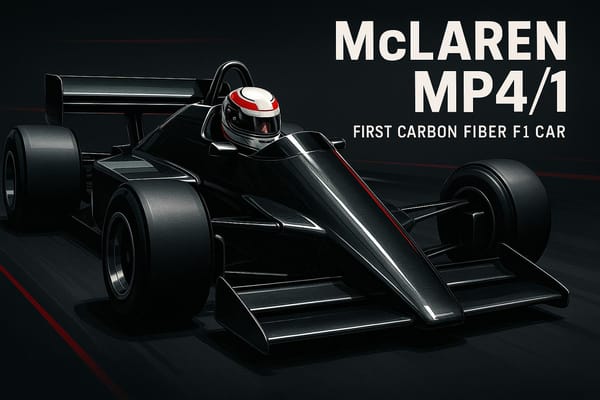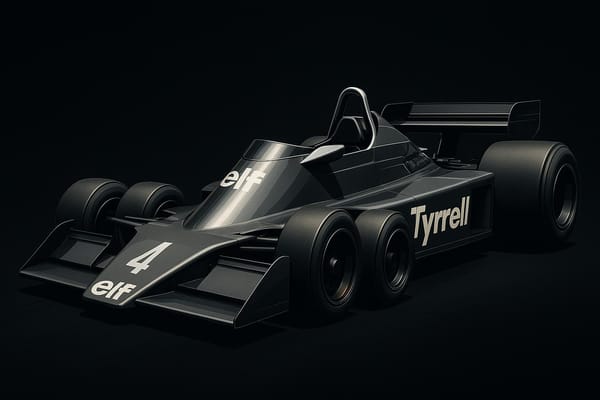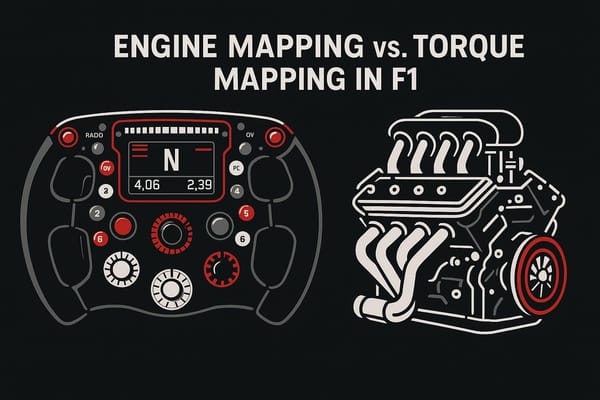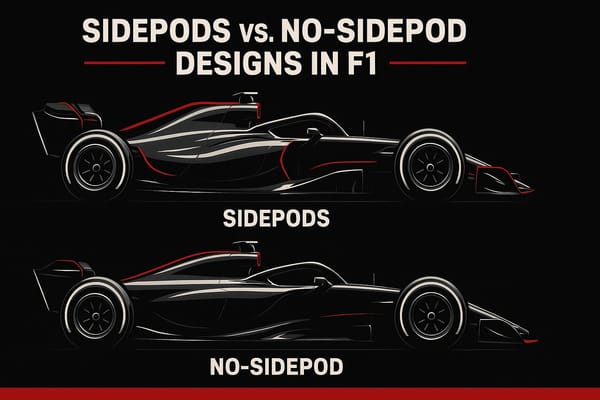Lewis Hamilton: The Seven-Time World Champion’s New Chapter with Ferrari
Lewis Hamilton's move to Ferrari marks a new chapter in his career as he aims for an eighth title while adapting to a revamped team and car dynamics.
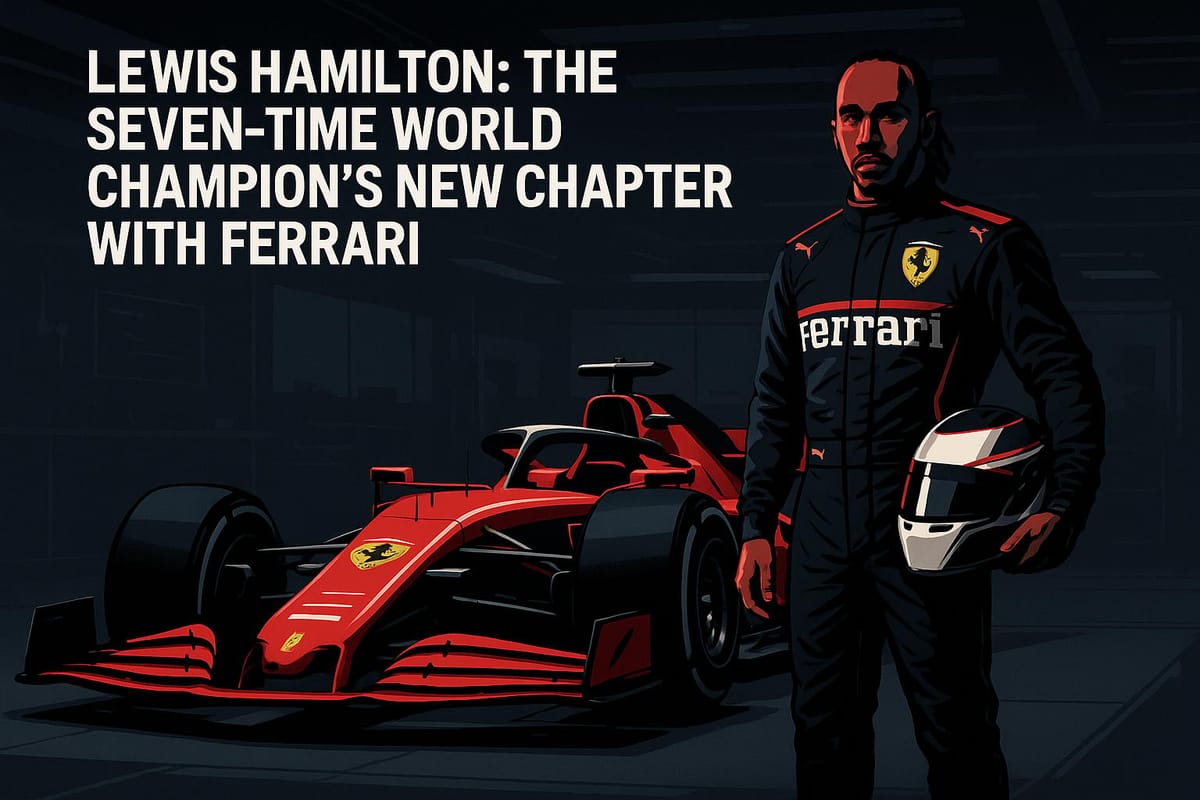
Lewis Hamilton has left Mercedes, where he won six world titles, to join Ferrari for the 2025 Formula 1 season. This bold move aims to fulfill his childhood dream of driving for Ferrari while chasing an eighth world championship. Here’s what you need to know:
- Why the Switch? Ferrari offered a clear development plan, especially with 2026 regulation changes, while Mercedes struggled to reclaim dominance.
- Early Challenges: Hamilton is adapting to Ferrari's car dynamics, including new braking systems and handling, which differ significantly from his Mercedes experience.
- Driver Pairing: Partnered with Charles Leclerc, Hamilton aims to strengthen Ferrari’s bid for its first title since 2007, though early tensions surfaced over race strategies.
- Ferrari’s Strategy: Ferrari has redesigned 95% of their car, tailoring it to Hamilton’s driving style, and is preparing for major 2026 technical changes.
- Performance So Far: Hamilton secured a Sprint victory in China but faces a steep learning curve, currently ranking seventh in the standings.
This partnership could reshape Formula 1’s competitive landscape, as Hamilton and Ferrari target a return to championship glory.
Lewis Hamilton: Ferrari requires a different driving style | 2025 Bahrain Grand Prix Race
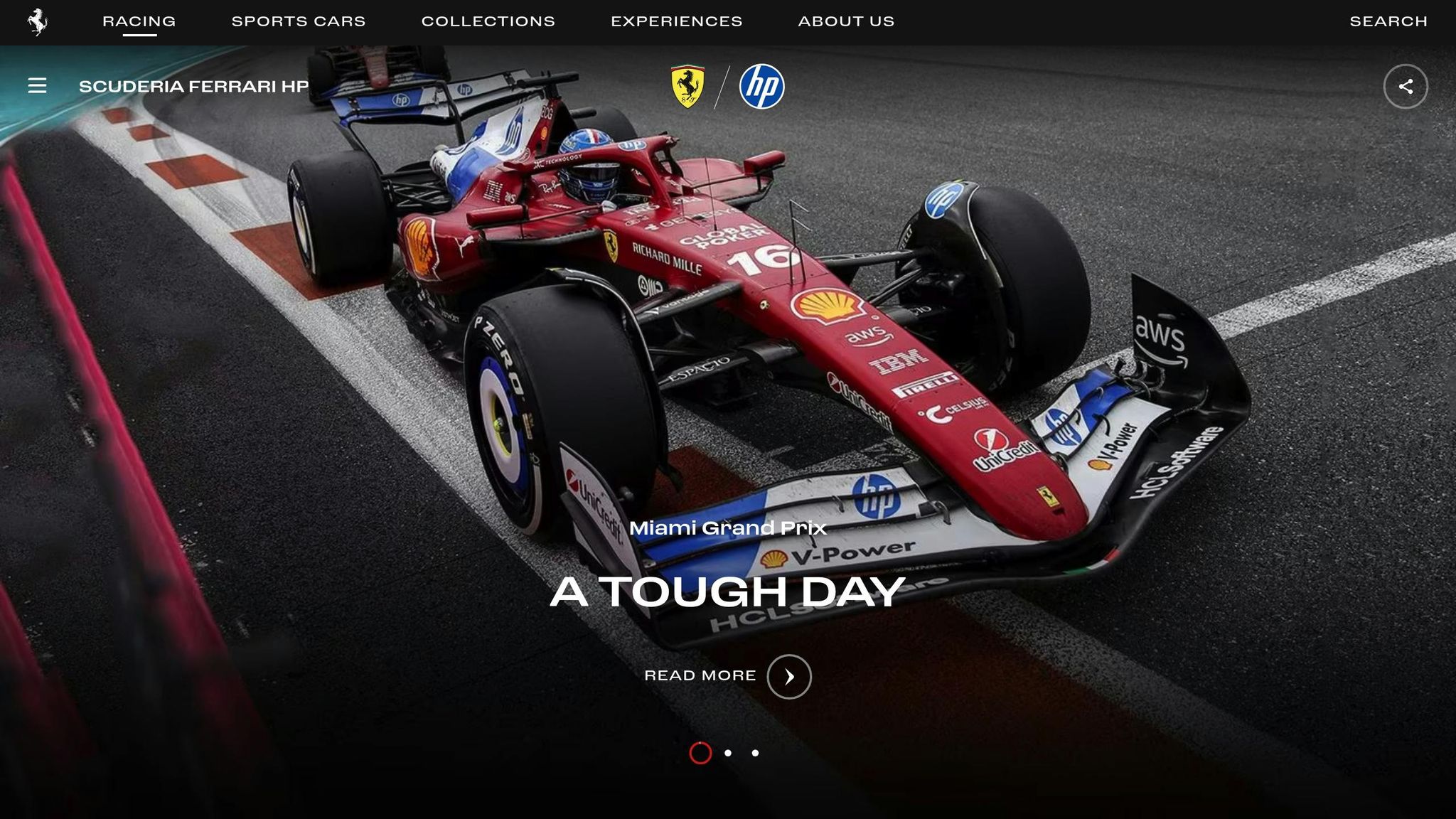
Performance Records: Mercedes vs Ferrari
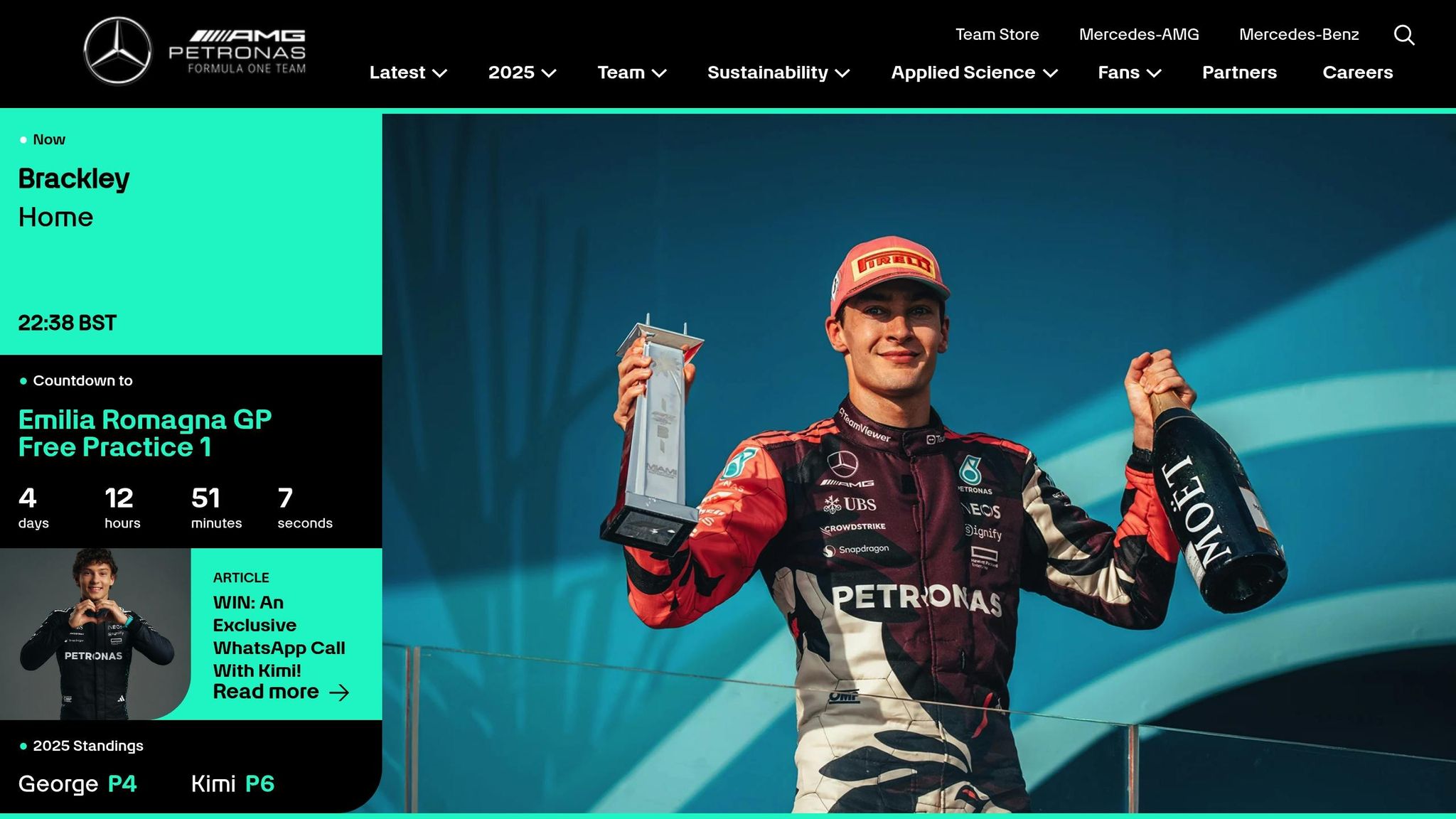
From 2013 to 2021, Lewis Hamilton's time with Mercedes coincided with the team's commanding dominance in Formula 1, while Ferrari faced a series of struggles. This stark contrast in performance highlights the strategic challenges Hamilton confronts in his next chapter.
Mercedes' supremacy during this period is evident in their extraordinary point-scoring efficiency. For example, in 2016, the team amassed 765 points, achieving 84.72% of the potential points available, while in 2014, they secured 701 points, representing 81.51%. The 2016 season was especially remarkable, with Mercedes winning 19 out of 21 races. This level of consistency and excellence drew industry-wide attention.
"Mercedes have reached a higher level than their rivals and so far have been almost untouchable. However, without wishing to be the bearer of bad tidings, sooner or later the wind changes. It's the law of the jungle in every sport." – Ross Brawn
Ferrari, despite their legacy of 16 Constructors' Championships, struggled to keep pace during this era. The gap between the two teams was particularly glaring in 2015 and 2017, where Mercedes finished nearly 300 and 146 points ahead of Ferrari, respectively.
The Constructors' Championship results from 2014 to 2021 illustrate Mercedes' dominance:
| Season | Constructor | Points |
|---|---|---|
| 2014 | Mercedes | 701 |
| 2015 | Mercedes | 703 |
| 2016 | Mercedes | 765 |
| 2017 | Mercedes | 668 |
| 2018 | Mercedes | 655 |
| 2019 | Mercedes | 739 |
| 2020 | Mercedes | 573 |
| 2021 | Mercedes | 613.5 |
These numbers emphasize Mercedes' precision and consistent performance, in contrast to Ferrari's struggles with reliability and strategic missteps. Ferrari also faced challenges in finding a strong second driver to effectively support their lead contender, further widening the gap.
The shifting dynamics in Formula 1 became even more apparent when McLaren clinched the 2024 Constructors' Championship with 666 points, signaling a new era of competition.
Car Design and Handling Differences
Switching from the Mercedes W15 to the Ferrari SF-25 brings significant adjustments for Hamilton, particularly in areas like suspension, aerodynamics, and overall handling.
The Mercedes W15 incorporates a redesigned sidepod shape and a pushrod rear suspension. Its updated chassis design increases underfloor volume, which impacts the car's aerodynamic efficiency and stability. These design elements stand in sharp contrast to Ferrari’s philosophy.
"Compared to last year's car, the feedback from the drivers is very different and more positive, which is encouraging", said Mercedes trackside engineering chief Andrew Shovlin.
Ferrari’s SF-25 takes a different approach with its pullrod rear suspension - a setup rarely seen among competitors. This design requires drivers to adjust their driving style significantly. However, early testing revealed challenges, such as ground contact issues and instability. Ferrari also reintroduced a pullrod front suspension, a feature last used in 2015, which shifts the car’s balance toward understeer.
The braking systems of the two cars also differ in key ways:
| Aspect | Mercedes W15 | Ferrari SF-25 |
|---|---|---|
| Brake Temperature Management | Focus on cooling | Transfers more heat to rims and tires |
| Front Tire Energy | Lower initial temperature | Higher heat input, aiding qualifying performance |
| Braking Style Compatibility | Works well with late braking | Suited to a two-stage braking method |
"The car feels unlike anything I've driven before, requiring a new approach", said Lewis Hamilton.
Despite Ferrari’s efforts, technical expert Gary Anderson has expressed doubts about the SF-25 offering the level of driver-friendliness Hamilton might have hoped for. Analyst Alex Brundle has described the car’s handling as "really, really nasty", particularly highlighting the challenges of managing understeer.
Reflecting on Mercedes’ improvements, Technical Director James Allison shared:
"We have worked hard to ensure that both axles, but particularly the rear axle, retain better control of the tire than on the W14. There's also been some housekeeping on areas in which we had room for improvement, including the DRS effect, and pit stop performance".
These contrasting technical philosophies highlight the broader challenge Hamilton faces in adapting to a car that operates on a fundamentally different design approach.
Team Structure and Driver Pairing
Lewis Hamilton and Charles Leclerc have created one of Ferrari's most formidable driver pairings. The duo made an immediate impact, with Hamilton clinching his first Sprint victory for Ferrari at the 2025 Chinese Grand Prix, while Leclerc secured a respectable fifth-place finish.
Both drivers share a similar, aggressive approach to racing, which has contributed to their strong on-track chemistry. Leclerc himself highlighted this connection:
"I was surprised – our driving style is very similar. We both like to push quite a lot, especially the entries, and on that we are quite similar."
Hamilton also praised Leclerc's talent and work ethic, saying:
"Charles is massively talented. Getting to see him work opposite the table and watching him in the garage, it's been really, really great."
However, their shared intensity on the track has also brought challenges. As the season progressed, strategic differences began to surface, testing their partnership. At the Miami Grand Prix, for example, conflicting race strategies led to early tensions. Hamilton voiced his frustrations, while Leclerc suggested addressing the issue in a post-race discussion.
Ferrari Team Principal Fred Vasseur has taken steps to manage these dynamics effectively:
"We have to make sure it is still like this – it is important to make progress. Be careful, I am not talking about fighting, but about competition. The teammate is always the first point of reference."
Hamilton's experience has already proven invaluable. At the Chinese Grand Prix Sprint, he not only set a new lap record (1:30.849) but also showcased the depth of knowledge he brings to the team. Technical analyst Karun Chandhok remarked:
"This is what Ferrari have done by bringing Lewis to the table. They have bought that experience and brought in over 100 grand prix wins and over 100 poles to just give them a little bit of a steer, not reinvent the wheel, and he's there to deliver the goods on track."
Following his Sprint success, Hamilton reflected on the challenges of adapting to a new team:
"I woke up feeling great today. I really do feel a lot of people underestimated the really steep climb it is to get into a new team, to become acclimatised within a team, to understanding and communication, all sorts of things."
Under Ferrari's revamped strategy, Vasseur is fine-tuning the roles of both drivers to capitalize on their strengths. With Hamilton's wealth of experience and Leclerc's undeniable skill, Ferrari is building a solid foundation for its championship aspirations.
Ferrari's Development Path
Hamilton's arrival has brought a fresh perspective to Ferrari's 2025 development strategy. The new car, known as Project 677, is almost entirely redesigned - 95% of it is new - and specifically tailored to suit Hamilton's driving preferences. This marks not just a change in the driver lineup but also a significant shift in Ferrari's technical approach. Under the leadership of Loic Serra, Ferrari's chassis technical director, several key changes have been introduced:
- Cockpit Redesign: Adjustments have been made to provide more space, based on Hamilton's input.
- Steering Interface: Previously designed for Vettel, the steering system has been revamped to align with Hamilton's driving style.
- Front Suspension Updates: Modifications now cater to Hamilton's late-braking technique, improving front tire energy management.
"It's a really exciting experience... This is something I've really enjoyed trying to wrap my mind around, particularly also just in settings and the terminology they use and the different ways that they can set up a car."
Looking ahead, Ferrari's focus isn't just on the present but also on upcoming regulation changes for 2026. These updates include significant shifts in car design and performance:
| 2026 Technical Changes | Specifications |
|---|---|
| Weight Reduction | 30 kg cut (from 798 kg to 768 kg) |
| Power Unit | 50% electric power integration |
| Focus Areas | Sustainability and reduced downforce |
Hamilton has already been involved in strategic discussions with Ferrari's leadership about these changes. He has also expressed admiration for the team's dedication to sustainability efforts.
"In terms of sustainability, particularly on the power unit side, I think that's a really bold step and I think it's going in the right direction."
Ferrari’s strong performance last season, where they scored 652 points compared to Mercedes' 468, highlights the potential of this partnership.
"Driving a Scuderia Ferrari car for the first time this morning was one of the best feelings of my life... When I started the car up and drove through that garage door, I had the biggest smile on my face. It reminded me of the very first time I tested a Formula 1 car, it was such an exciting and special moment."
With a blend of innovation and Hamilton's expertise, the future looks bright for Ferrari.
Benefits and Risks
Ferrari's revamped development strategy opens the door to both exciting opportunities and potential pitfalls with Lewis Hamilton joining the team. On one hand, the partnership promises gains, such as a 0.4-second improvement in simulator testing. On the other, it comes with its fair share of challenges.
Here’s a snapshot of the benefits and risks:
| Benefits | Risks |
|---|---|
| Better car development thanks to Hamilton's technical expertise | Adjusting to a new car's unique handling |
| Familiarity with technical figures like Loic Serra and Jerome D'Ambrosio | Struggles with optimizing tire performance |
| Strong rapport with Team Principal Fred Vasseur | Heightened external scrutiny |
| Fresh insights into setup strategies | Potential miscommunication during races |
Hamilton's history with key technical figures, such as Loic Serra and Jerome D'Ambrosio, strengthens his connection with Team Principal Fred Vasseur. This familiarity could be pivotal in driving Ferrari's car development forward.
That said, adapting to a new car and team dynamics isn't without its hurdles. Currently ranked seventh in the standings, Hamilton has faced difficulties, including being outqualified in five of six sessions. The car's narrow tire performance window remains a significant challenge.
"Obviously the engineers that I'm working with now are used to setting up the car for a different driver and a different driver's style, and I'm used to driving a car with a different driving style, so it's just a combination of different things."
- Lewis Hamilton
Racing for Ferrari also comes with an unmatched level of pressure. Former F1 driver Flavio Briatore put it succinctly:
"First of all, he needs a good car, because you can have Batman driving, but if it's not competitive, the driver won't make a difference."
- Flavio Briatore
Hamilton’s dedication to pushing boundaries and contributing to car development is a major asset for Ferrari. However, the team must carefully navigate the immediate adjustment phase while keeping an eye on the bigger picture, especially with regulation changes on the horizon for 2026.
Conclusion
Lewis Hamilton's decision to join Ferrari marks a pivotal moment in Formula One. The deal, reportedly worth around $63.5 million annually (based on a £50 million per year estimate), highlights Ferrari's determination to break its 16-year championship drought.
During his debut, Hamilton spoke with heartfelt emotion about the passion and energy of the Ferrari team. The contract, which guarantees at least two years with options for extension, aligns with Ferrari's ambitious plans for the future - especially their 2025 car, which is said to feature a 95% redesign.
This move not only sets up immediate challenges on the track but also lays the groundwork for long-term technical advancements. Adjusting to a new team and car dynamics will take time, but Hamilton’s experience combined with Ferrari’s bold design philosophy could redefine the championship race. As Red Bull team boss Christian Horner observed:
"They'll love him if he's quick and he delivers and he'll feed off that energy. If it doesn't get off to a good start, then it'll inevitably be harder for him."
Hamilton’s decorated career shows his ability to adapt and lead, making him well-equipped to guide Ferrari into this new chapter. His focus remains firmly on the road ahead:
"I do believe this team has absolutely everything to win – we've just got to build one step at a time."
With Ferrari’s engineering prowess, Hamilton’s skill, and their shared ambition, this partnership could reshape Formula One’s competitive landscape. For Hamilton, it’s a chance to chase an unprecedented eighth world title under the banner of one of the sport’s most iconic teams.
FAQs
What challenges could Lewis Hamilton face in adjusting to Ferrari's car compared to his time with Mercedes?
Lewis Hamilton could encounter several hurdles as he transitions to Ferrari's car dynamics after years of driving for Mercedes. A major change lies in the engine braking system, which operates differently from what he's used to. This might force him to tweak his braking style and adjust to a new pedal feel. Additionally, Hamilton's driving techniques, honed specifically for Mercedes' cars, might not mesh perfectly with Ferrari's ground-effect design. This could lead to challenges like understeer and require him to recalibrate his braking points and cornering strategies.
Another significant shift involves adapting to Brembo brakes, which differ in feel from the Carbon Industrie brakes he relied on at Mercedes. This change will likely demand a fresh approach to braking pressure and technique, adding another layer of complexity as Hamilton gets accustomed to Ferrari’s setup. Together, these technical and strategic adjustments underline the challenges ahead as he aims to extract the best performance from Ferrari’s car.
How could Lewis Hamilton teaming up with Charles Leclerc shape Ferrari’s strategy and performance in the coming seasons?
The collaboration between Lewis Hamilton and Charles Leclerc has the potential to reshape Ferrari’s approach and performance on the track. Both drivers are said to have comparable driving styles, which could allow the team to concentrate on a shared direction for car development. This synergy might make it easier for Ferrari to fine-tune their cars to meet the needs of both drivers, possibly boosting their overall results.
That said, Hamilton’s age - he’s nearing 40 - raises questions about his long-term competitiveness. Choosing Hamilton also came at the expense of retaining Carlos Sainz, a younger driver who represented a longer-term investment. Now, Ferrari faces the challenge of balancing Hamilton’s experience as a seven-time world champion with Leclerc’s youthful energy and ambition. Striking this balance will be crucial for the team’s success in the upcoming seasons.
How has Ferrari redesigned their car to align with Lewis Hamilton's driving style and boost their performance?
Ferrari's SF-25, crafted for the 2025 season, has been reimagined to align with Lewis Hamilton's driving preferences while boosting the team's overall performance. Among the standout updates is the pullrod front suspension, designed to improve airflow and increase underbody downforce. The car also features adjustments to the cooling system and internal gearbox components, allowing for more flexibility in aerodynamic development. Additionally, an extended wheelbase has been introduced to further refine airflow efficiency.
To make Hamilton feel right at home, Ferrari has tailored the steering wheel layout to his liking. Button placements, gear paddles, and clutch paddles have been adjusted to mirror the setup he was accustomed to during his time at Mercedes. While the SF-25 requires a slightly different driving technique, Hamilton has already begun fine-tuning his approach to unlock the car's full potential. These updates underline Ferrari's determination to harness Hamilton's skillset while pushing their engineering to new heights.

